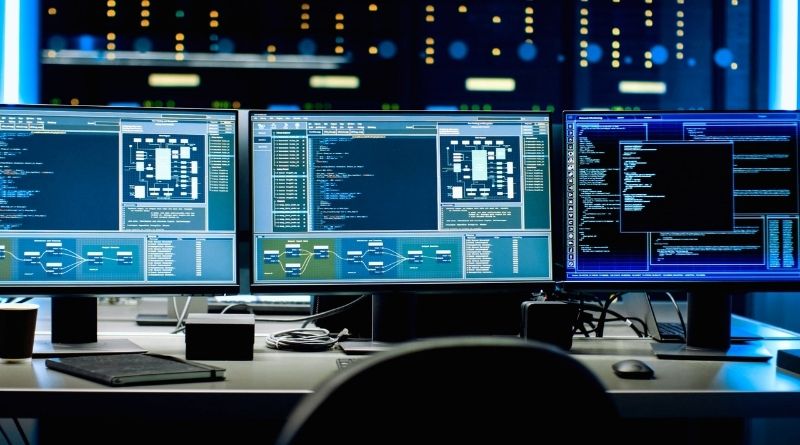Security Operations Center (SOC): What Does a SOC Do?

The Security Operations Center (SOC), also known as the Information Security Operations Center (ISOC), is a centralized area where information security teams typically monitor, detect, and track 24/7 cybersecurity events.
The security team, made up of security analysts and engineers, oversees the activities of servers, databases, networks, applications, terminals, websites and other systems for the sole purpose of detecting violations. Security threats as soon as possible. They monitor relevant external sources (such as threat lists) that affect the security of the organization.
The SOC must not only identify threats, analyze them, investigate the source, report any vulnerabilities and plan to prevent similar incidents in the future. In other words, when they are constantly looking for ways to improve the security situation of the company, they face real-time security issues.
Below we cover the basic functions of SOC or GSOC, important aspects in setting up SOC.
What is The Importance of a SOC?
Organizations are more likely to be harmed by cyber-attacks. In 2018, billions of people were affected by data breaches and cyber-attacks, and consumer confidence in companies’ ability to protect their privacy and personal information continued to decline. Nearly 70% of consumers believe businesses are vulnerable to hacking and cyberattacks and say they are less likely to continue or start a business with compromised companies.
Simply put, SoCs ensure threats are detected and prevented in real-time. From a broader perspective, SoCs can:
Respond quickly: SoC provides a centralized, comprehensive, real-time view of how your entire infrastructure works from a security perspective, even if you have multiple locations and thousands of endpoints. You can identify, identify, prevent and fix problems before they cause too many problems for the business.
Protect Customer and Customer Trust: Consumers are already sceptical of many businesses and concerned about their privacy.
Low Cost: While many companies find it convenient to set up a SOC network, the cost of counterfeiting, including data loss, corrupted data, or customer defaults, is enormous. And, SOC employees will make sure you’re using the right tools for your business to their full potential, so you don’t waste money on unnecessary tools.
SOC and a NOC: What Is The Difference?
SoC focuses on monitoring, tracking and analysing the security status of an organization 24/7, 365 days a year, the primary focus of the NOC is to ensure that network performance and speed are consistent and that Idle time is limited.
SOC engineers are responding to cyber threats and attack attempts before company data or systems are compromised. NOC staff will look for any issues that may slow down the network or cause idle time. Both are supervised in real-time to prevent problems before they affect customers or employees and constantly look for ways to improve them to prevent similar problems from happening again.
The SOC and NOC must work together to resolve major incidents and crises, and in some cases, SOC tasks may be hosted within the NOC itself. NOCs can identify and respond to certain security threats, especially when it comes to network performance, with the team properly trained and looking for such threats.
Who Works in a SOC?
SOC staff are qualified security analysts and engineers, as well as supervisors, to ensure that everything runs smoothly. They are specially trained professionals to monitor and manage security threats. They are not only experts in the use of various safety devices, but also know the specific procedures to be followed in case of infrastructure breach.
They use a hierarchical approach to managing security issues, where analysts and engineers are classified based on their expertise and experience. A simple team can be built as follows:
Level 1: The first line of the event response. These security professionals look for alerts and determine the need for each alert, as well as move it to level 2. Level 1 employees can also store security equipment and maintain general reports.
Level 2: These personnel are usually highly qualified, so they can quickly identify the source of the problem and predict which part of the infrastructure will be attacked. They follow procedures to resolve the issue and any consequences, as well as issues for further investigation.
Level 3: The top professional security analysts who are actively looking for vulnerabilities in the network. They use sophisticated threat detection tools to diagnose vulnerability and make recommendations to improve the overall security of the organization.
Reads More: Different Aspects of Assignment Writing Services Which Make Them Vital
Level 4: This level consists of senior-level managers and executives with many years of experience. This group oversees all the activities of the SOC team and is responsible for recruiting and training as well as evaluating individual and overall activities. Entered Level 4 during the crisis and, in particular, served as a liaison between the SOC team and the rest of the organization. They are responsible for complying with company, industry and government regulations.
What Does a Security Operations Center (SOC) Do?
SOC leads the real-time event response and provides continuous security improvements to protect the organization from cyber threats. Using the right tools and the right combination of people to oversee and manage the entire network, SOC provides greater efficiency:
- Network, hardware and software activation, round-the-clock monitoring, threat and breach detection and event response.
- To make sure they can easily fix security issues, make sure they specialize in all the tools your company uses, including third-party vendors.
- Application Software Installation, Update and Troubleshooting.
- Monitoring and maintaining firewall and intrusion systems.
- Scanning and prevention of antivirus, malware and ransomware solutions.
- Email, voice and video traffic management.
- Patch maintenance and whitelist.
- In-depth analysis of security log data from various sources.
- Security trends analysis, research and documentation.
- Security breach research to understand the root cause of attacks and to prevent future breaches.
- Implement security policies and strategies.
- Backup, storage and restore.
SOC uses a variety of tools to collect data from networks and various devices, monitor and warn employees about the potential dangers of discrepancies. However, when problems arise, the Security Operations Center does more than just fix them.






